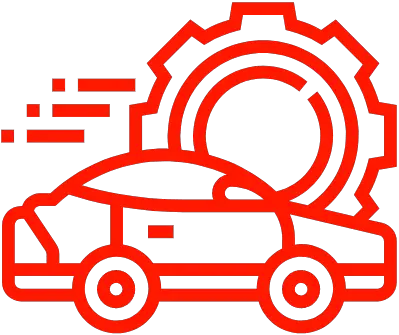Why Does My Serpentine Belt Keep Breaking?
A serpentine belt, also known as a drive belt, is a belt that runs along the front of an engine to power the accessories in a vehicle, such as the air conditioning compressor, alternator, power steering pump, and water pump. If your serpentine belt keeps breaking, it could be due to several causes. These include wear and tear from normal use over time; misalignment from other components; improper tensioning; and contamination from dirt or oil. It’s important to keep your serpentine belt in good condition to ensure that it can last for its expected lifespan. If you’re having trouble with your serpentine belt breaking regularly, then you should take your vehicle to a qualified mechanic for an inspection and repair.
Automobile: Why Does My Serpentine Belt Keep Breaking?
One of the most common problems faced by car owners is a broken serpentine belt. A serpentine belt is an important component in the engine that helps keep all of the essential elements running smoothly. When the serpentine belt breaks, it can cause major damage to your car’s engine, transmission, and other components. The good news is that there are some easy ways to diagnose and prevent a broken serpentine belt.
Reasons Why a Serpentine Belt May Break
There are several reasons why your serpentine belt may break. Poor installation is one of the most common causes, as it can be difficult to get the tension just right for all of the components of your car’s engine. Low-quality components can also contribute to breakage as they are not designed to withstand high levels of stress and vibration. Age and wear can also be factors in breaking a serpentine belt, as they tend to weaken over time. Finally, misalignment can cause excessive strain on the belt, leading to failure.
How to Diagnose a Broken Serpentine Belt
The first step in diagnosing a broken serpentine belt is a visual inspection. You should be able to see any signs of wear or damage on the surface of the belt itself. You should also listen for any unusual noises coming from under the hood when you start your car; this could indicate that something is not running correctly or that there is an issue with tension or alignment on one or more components in your engine. Finally, you should check the tension on the belt by pressing down gently from either side; if there is too much give then it could be an indication that something needs adjustment or replacement.
Tips for Avoiding Serpentine Belt Breakage
Fortunately, there are some simple steps you can take to reduce your risk of experiencing a broken serpentine belt in your car: Replace belts regularly – even if they appear to be in good condition – as this will help ensure optimal performance and reduce stress on them over time; use high-quality components when replacing worn out parts; and have your alignment checked frequently so that all components are properly aligned with each other and no excessive strain is placed on any single part of the system.
How to Replace a Broken Serpentine Belt
If you do find yourself needing to replace a broken serpentine belt, then these steps will help make sure it’s done properly: First gather all necessary tools and materials for the job (usually just standard wrenches will do). Next remove any old belts from their respective engine components (some may require special tools). Then install any new belts onto their respective engine components (again make sure you have all necessary parts). Finally adjust tension on new belts as needed until it’s tight enough for optimal performance but not so tight that it puts undue strain on any part of the system.
Signs of a Potential Serpentine Belt Problem
There are usually signs that something might be wrong before your serpentine belt actually breaks; these include squealing noises coming from under your hood when you start up your car and noticeable sagging or slipping of the belt on pulleys due to poor tension or alignment issues. If you notice either of these symptoms then it’s best not to wait too long before taking action; getting an inspection done sooner rather than later could save you both time and money in repairs down the road!
Common Causes of Premature Breakage in Serpentine Belts
When a serpentine belt fails prematurely, it is usually due to one or more of the following causes. Poorly installed belts are one of the most common causes. If the belt is not properly aligned and tensioned, it can cause too much wear and tear on the belt, resulting in premature failure. Another common cause of premature breakage is worn idler pulleys and tensioners. Over time, these components can wear out and cause the belt to slip or break. Finally, a worn crankshaft pulley can also lead to premature failure of the serpentine belt.
Replacing Parts to Prevent Future Problems with the Serpentine Belt
Replacing worn idler pulleys and tensioners can help prevent future problems with your serpentine belt. When replacing these components, make sure you use parts that are designed for your vehicle’s make and model. This will ensure that they fit correctly and provide proper tension for your serpentine belt. It’s also important to double-check that all installation components are properly aligned before tightening them down. Additionally, you may want to replace your crankshaft pulley if it appears worn or damaged in any way.
Finally, be sure to check all parts regularly for signs of wear or damage. If you notice anything out of the ordinary with your serpentine belt or its related components, be sure to address it as soon as possible in order to prevent further problems down the road. With proper installation and regular maintenance, you should be able to keep your serpentine belt running smoothly for years to come!
FAQ & Answers
Q: Why does my serpentine belt keep breaking?
A: Serpentine belts may break due to several reasons, such as poor installation, incorrect tension, low quality components, age and wear, and misalignment.
Q: How can I diagnose a broken serpentine belt?
A: To diagnose a broken serpentine belt, you should visually inspect the belt for signs of wear or damage. Additionally, you can listen for unusual noises coming from the engine compartment. Lastly, check the tension of the belt by gently tugging on it with your hands.
Q: How can I avoid serpentine belt breakage in the future?
A: To avoid potential breakage in the future, you should consider replacing belts regularly and using high quality components. Additionally, it’s important to have your alignment checked frequently by a professional mechanic.
Q: What are some tips for replacing a broken serpentine belt?
A: When replacing a broken serpentine belt, make sure to gather all necessary tools and materials. Then remove old serpentine belt from engine components and install new one onto engine components. Last but not least, adjust tension of new serpentine belt as necessary until it is snug but not too tight.
Q: What are some signs that there may be an issue with my serpentine belt?
A: One common sign that there may be an issue with your serpentine belt is a squealing noise coming from the engine compartment. Additionally, you may also notice a noticeable sagging or slipping of the belt on pulleys which could indicate a problem.
In conclusion, the breaking of your serpentine belt is most likely caused by a combination of factors such as worn idler pulleys, a misaligned tensioner or an incorrect belt size. It is important to have a qualified technician inspect the system to determine the root cause and replace any faulty components. Regular maintenance of your vehicle and checking for worn or damaged belts can prevent further issues and keep you and your car safe on the roads.
Author Profile

-
With more than 30 years in the bicycle industry, I have a strong background in bicycle retailing, sales, marketing and customer service. I have a passion for cycling and a dedication to excellence. As a manager, I worked diligently to increase my capabilities and responsibilities, managing up to eleven mechanics (at Palo Alto Bicycles) and later as a working partner in my own store.
As the shop owner of Spoke n’ Word Cycles in Socorro, NM, the success of the mission was my responsibility, which I pursued passionately since we opened in 2003 through the spring of 2011. I am adept at managing owned and loan inventory, preparing weekly & annual inventory statements, and managing staff. The role as managing partner also allowed me tremendous freedom. I used this personal freedom to become more deeply involved in my own advancement as a mechanic, to spearhead local trail building, and advocating for cycling both locally and regionally.
As a mechanic, I have several years doing neutral support, experience as a team mechanic, and experience supporting local rides, races, club events. I consistently strive to ensure that bicycles function flawlessly by foreseeing issues and working with the riders, soigners, coaches and other mechanics. Even with decades of experience as a shop mechanic and team mechanic, and continue to pursue greater involvement in this sport as a US Pro Mechanic, and UCI Pro Mechanic.
Latest entries
- July 26, 2023BodyFind the Best Grill for Your 2007 Toyota Tacoma – A Complete Guide
- July 26, 2023BodyUpgrade Your Ford Escape with the Best 2008 Grill – Here’s How!
- July 26, 2023Bumper Stickers, Decals And MagnetsBest Chevy 1500 Door Emblem: Upgrade Your Truck with a Stylish Emblem
- July 26, 2023Marker Light AssembliesGive Your 2008 Dodge Dakota a Makeover with the Best Grill Upgrade
